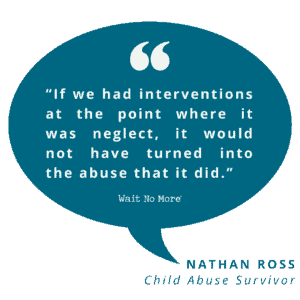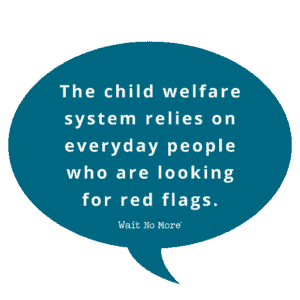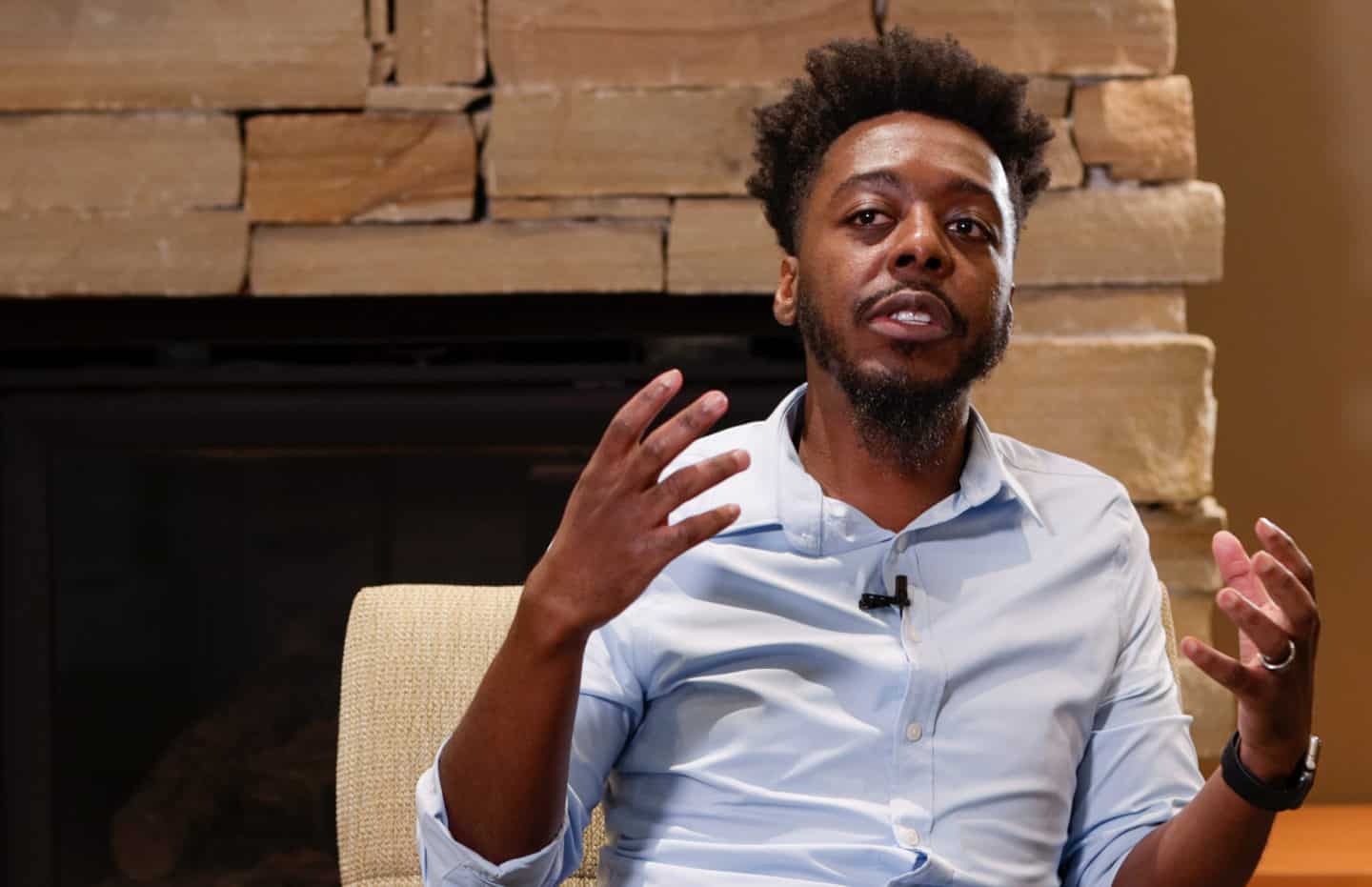At the age of 10, Nathan Ross entered foster care following the death of two of his siblings, who died from abuse at the hands of their biological mother. As an adult, Nathan has spent his career working to improve the child welfare system. His story and experiences raise awareness about how to prevent child abuse.
Abuse and Neglect

One of the most important things Nathan wants others to understand is that neglect is one of the main reasons a child enters foster care. The definitions of abuse and neglect are different, but neglect often turns into abuse.
Unfortunately, many people will see things that appear to be neglect and think to themselves, “This isn’t abuse. It’s not severe enough to report.”
Nathan wants people to understand the importance of identifying neglect.
“If we had interventions at the point where it was neglect,” Nathan describes, ” it would not have turned into the abuse that it did.” Nathan knows that his story may have been very different if his mother had received the resources she desperately needed. So if someone suspects neglect, they should intervene.
Look For Red Flags
Nathan has come to recognize that many people define neglect differently. Everyone has their own standards of what they deem a “good life.” So when it comes to identifying neglect and abuse, people should be careful not to project their own opinions about what constitutes adequate living onto a situation of potential neglect or abuse.
It is also essential for people to understand that identifying possible neglect does not mean a child will immediately enter foster care. Ideally, looking for the indicators of potential neglect will prompt people to wrap support around struggling families. This is how to prevent neglect from ever becoming abuse.
Irregular meals
Look for children who do not have regular meals. Perhaps this means a child relies on school lunches or other interventions for food. What happens if school is on break and the child is not receiving daily lunches? Without proper intervention, the child’s health and safety could be jeopardized. This situation is not a parent-intended. Likely, the parent is struggling to make ends meet and cannot provide for their family’s basic needs.
Inappropriate clothing for the season
Look for children who wear clothing that is out of season. For example, a child wearing sweaters and thick pants in the summertime is a red flag of potential neglect. If a child wears shoes with holes, their family may need support. While it is certainly helpful to provide necessary items to a family, such as clothing and food, long-term support is also crucial.
Poor academic performance
Look for children who have a hard time paying attention in school. Poor school performance may indicate that parents are not engaged in their child’s academics at home. Perhaps the parent is working multiple jobs to provide for their children. As a result, the parents may be uninvolved in their child’s academic life.
Connect, Support, Report
In Nathan’s ideal world, the first step someone would take when seeing red flags is to build rapport.
“It’s rarely going to be the person that you just happen to see in the grocery store passing by that you’re going to make the hotline call for,” Nathan explains. “You don’t know enough information to do that. It’s more likely going to be someone that you are consistently seeing, either their child or the family unit.”
So when someone constantly sees the child or family and suspects neglect, they should ask themselves how they are forming a connection. It can be as simple as asking, “How are you doing?” If a concerned individual shows genuine interest in getting to know a family, they are more likely to make a difference. If needed, find a mutual connection and have them check in on the family.
“Get uncomfortable,” Nathan asserts. It can be hard to approach a parent and express concern, but this is how to prevent child abuse. If a family truly is struggling, their community should be willing to help them find the support and resources they need.

Be Proactive and Intentional
There is a common assumption that it is rude or unnecessary to be involved in other people’s lives. When it comes to preventing child abuse, Nathan knows that this cannot be the norm.

People often think, “I wouldn’t want to falsely accuse someone.” Or they decide, “That’s none of my business.”
But then, when a child truly experiences abuse and neglect, those same people ask, “How could the child welfare system allow this to happen?”
In reality, the child welfare system relies on everyday people interacting with children and looking for red flags. Child welfare depends on individuals to report the things that do not seem quite right. To prevent child abuse, people must be intentional about getting to know families in their community.
At the same time, communities must be proactive in supporting struggling families. When parents receive resources and services to help meet their family’s basic needs, children can remain in their own homes. Support can prevent significant trauma caused by family separation.
The Importance of Reporting Suspected Neglect or Abuse
While Nathan’s ideal world is for people to connect with struggling families and intervene with assistance, he understands there are legal steps many individuals must take. Mandated reports should undoubtedly contact the appropriate authorities immediately.
If you suspect child abuse or neglect, it is crucial to report it. Nationally you can call 1-800-4-A-CHILD. Each state also has its own reporting hotline, which you can find with a simple internet search. If at any point you witness a child in a life-threatening situation, call 911 immediately.
For many individuals, child abuse prevention begins with relationships. As people connect with struggling families, they can recognize the support and resources that would prevent abuse. And with proper intervention, communities can spare families and children from a great deal of trauma.




















